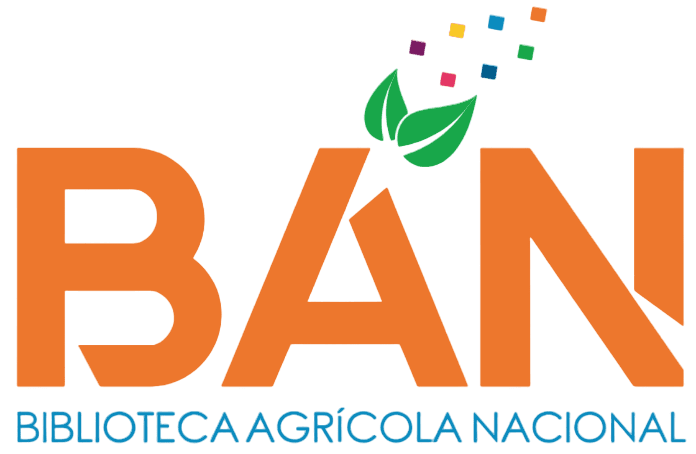Evaluación productiva y nutricional del botón de oro (Tithonia diversifolia (Hemsl.) A. Gray) en la costa central
Cargando...
Código QR
Autores
Pérez Sánchez, Katherin Erika
Correo de contacto
Resumen
Se evaluó el comportamiento productivo y nutricional del botón de oro (Tithonia diversifolia (Hemsl.) A. Gray) en cuatro épocas de poda, y se determinó el mejor momento de poda según la relación entre la calidad nutritiva y agronómica de la planta. La investigación se desarrolló en el área de experimentación de la Facultad de Zootecnia, Universidad Nacional Agraria La Molina, Lima-Perú. Se utilizó un Diseño Completamente al Azar Desbalanceado con cuatro tratamientos: T1 (poda a los 28 días) 8 repeticiones; T2 (poda a los 42 días) 8 repeticiones; T3 (poda a los 56 días) 7 repeticiones; y T4 (poda a los 70 días) 6 repeticiones. Los resultados de las variables agronómicas presentaron diferencias significativas, los tratamientos T3 y T4 presentaron mejores valores en altura de planta (T3: 117 cm y T4: 133.7 cm), tasa de crecimiento (T3: 58.46 kg MS/ha día y T4: 73.03 kg MS/ha día) y biomasa de total (T3: 3273.87 kg MS/ha y T4: 5112.11 kg MS/ha). En relación hoja/tallo el T1 presentó el mayor valor con 9.65 (H/T). En las variables nutricionales, la proteína fue mayor en hoja (30.29%) y tallo (23.02%) en el T1. En fibra detergente neutra (FDN), los menores valores en hoja fueron en los tratamientos T3 (39.84%) y T4 (39.98%) y en tallo el menor valor fue en el T1 (50.01%). En digestibilidad de la materia orgánica verdadera (DIVMO VD%) de hoja el mayor valor fue en el T3 (93.04%), y en tallo en T2 (81.77%). En energía metabolizable (Mcal/kg MS) presentó mayor valor en hoja en el T3 (3.56 Mcal/kg MS), y tallo en el T2 (3.13 Mcal/kg MS). Se concluye que el T3 (56 días) es el mejor momento de poda, porque presentó la mejor calidad nutritiva y la mayor producción de biomasa en comparación con los demás tratamientos.
The productive and nutritional behavior of botón de oro (Tithonia diversifolia (Hemsl.) A. Gray) was evaluated in four pruning seasons, and the best pruning time was determined according to the relationship between the nutritional and agronomic quality of the plant. The research was carried out in the experimentation area of the Faculty of Zootechnics, Universidad Nacional Agraria La Molina, Lima-Peru. A Completely Unbalanced Randomized Design was used with four treatments: T1 (pruning at 28 days) 8 replications; T2 (pruning at 42 days) 8 repetitions; T3 (pruning at 56 days) 7 repetitions; and T4 (pruning at 70 days) 6 repetitions. The results of the agronomic variables showed significant differences, the T3 and T4 treatments presented better values in plant height (T3: 117 cm and T4: 133.7 cm), growth rate (T3: 58.46 kg DM/ha day and T4: 73.03 kg DM/ha day) and total biomass (T3: 3273.87 kg DM/ha and T4: 5112.11 kg DM/ha). In leaf/stem ratio, T1 presented the highest value with 9.65 (H/T). In the nutritional variables, protein was higher in leaf (30.29%) and stem (23.02%) in T1. In neutral detergent fiber (NDF), the lowest values in leaf were in the T3 (39.84%) and T4 (39.98%) treatments and in stem the lowest value was in T1 (50.01%). In true digestibility organic matter of leaf, the highest value was in T3 (93.04%), and in stem in T2 (81.77%). In metabolizable energy (Mcal/kg DM), it presented a higher leaf value in T3 (3.56 Mcal/kg DM), and stem in T2 (3.13 Mcal/kg DM). It is concluded that T3 (56 days) is the best time for pruning, because it presented the best nutritional quality and the highest biomass production compared to the other treatments.
The productive and nutritional behavior of botón de oro (Tithonia diversifolia (Hemsl.) A. Gray) was evaluated in four pruning seasons, and the best pruning time was determined according to the relationship between the nutritional and agronomic quality of the plant. The research was carried out in the experimentation area of the Faculty of Zootechnics, Universidad Nacional Agraria La Molina, Lima-Peru. A Completely Unbalanced Randomized Design was used with four treatments: T1 (pruning at 28 days) 8 replications; T2 (pruning at 42 days) 8 repetitions; T3 (pruning at 56 days) 7 repetitions; and T4 (pruning at 70 days) 6 repetitions. The results of the agronomic variables showed significant differences, the T3 and T4 treatments presented better values in plant height (T3: 117 cm and T4: 133.7 cm), growth rate (T3: 58.46 kg DM/ha day and T4: 73.03 kg DM/ha day) and total biomass (T3: 3273.87 kg DM/ha and T4: 5112.11 kg DM/ha). In leaf/stem ratio, T1 presented the highest value with 9.65 (H/T). In the nutritional variables, protein was higher in leaf (30.29%) and stem (23.02%) in T1. In neutral detergent fiber (NDF), the lowest values in leaf were in the T3 (39.84%) and T4 (39.98%) treatments and in stem the lowest value was in T1 (50.01%). In true digestibility organic matter of leaf, the highest value was in T3 (93.04%), and in stem in T2 (81.77%). In metabolizable energy (Mcal/kg DM), it presented a higher leaf value in T3 (3.56 Mcal/kg DM), and stem in T2 (3.13 Mcal/kg DM). It is concluded that T3 (56 days) is the best time for pruning, because it presented the best nutritional quality and the highest biomass production compared to the other treatments.
Descripción
Universidad Nacional Agraria La Molina. Facultad de Zootecnia. Departamento
Académico de Producción Animal
Palabras clave
Alimentación de los animales; Aves; Reproducción; Evaluación; Factores de rendimiento; Perú; Productividad
Citación
Fecha
2025
Colecciones
Seleccionar año de consulta:
Licencia de uso

Excepto si se señala otra cosa, la licencia del ítem se describe como info:eu-repo/semantics/openAccess

